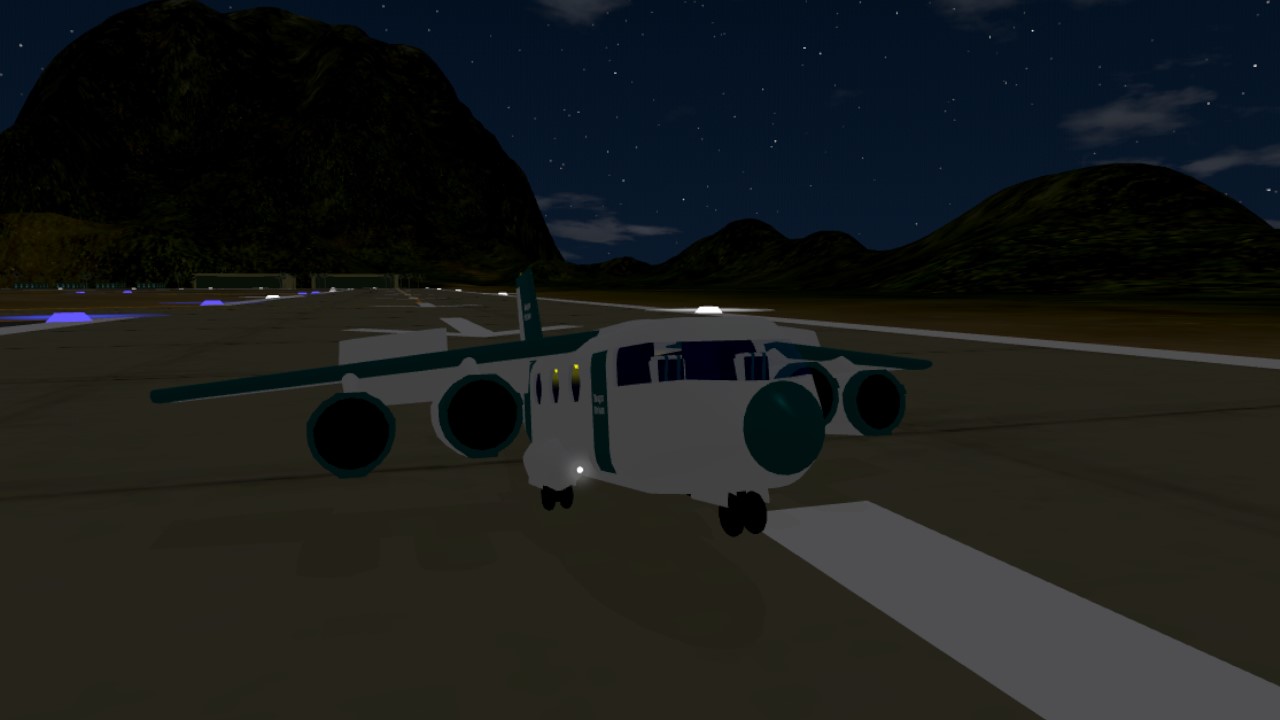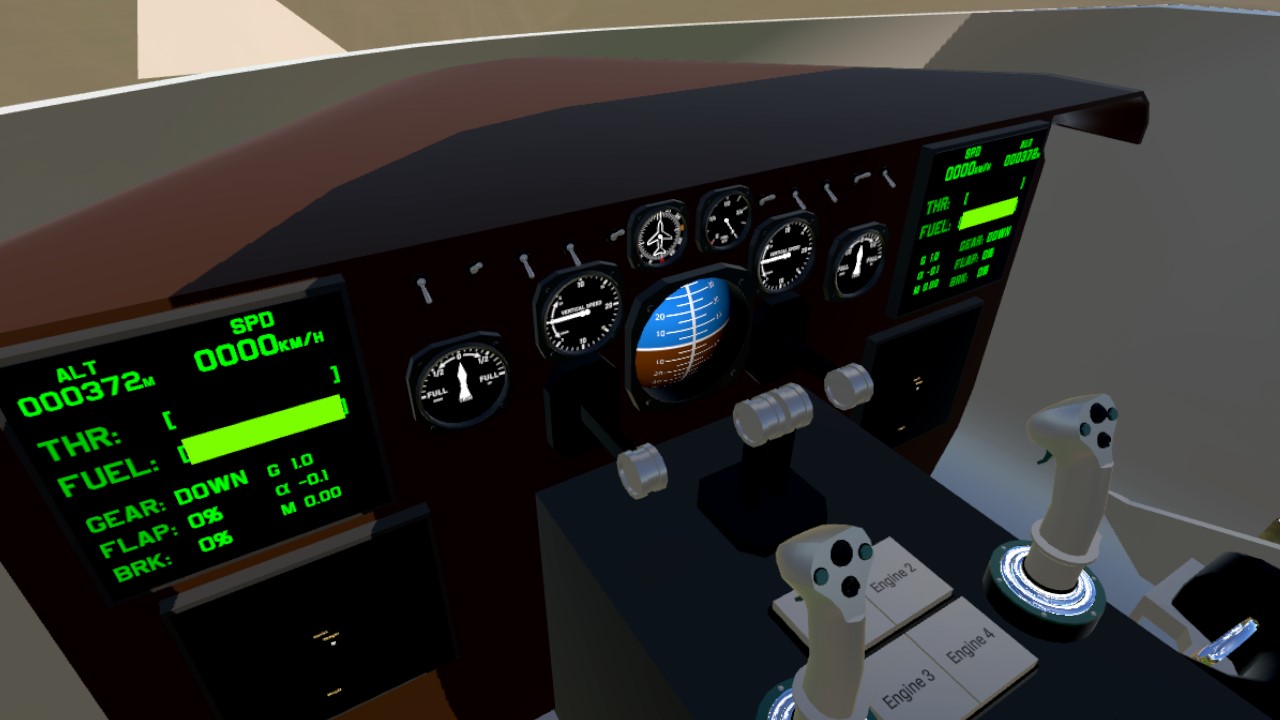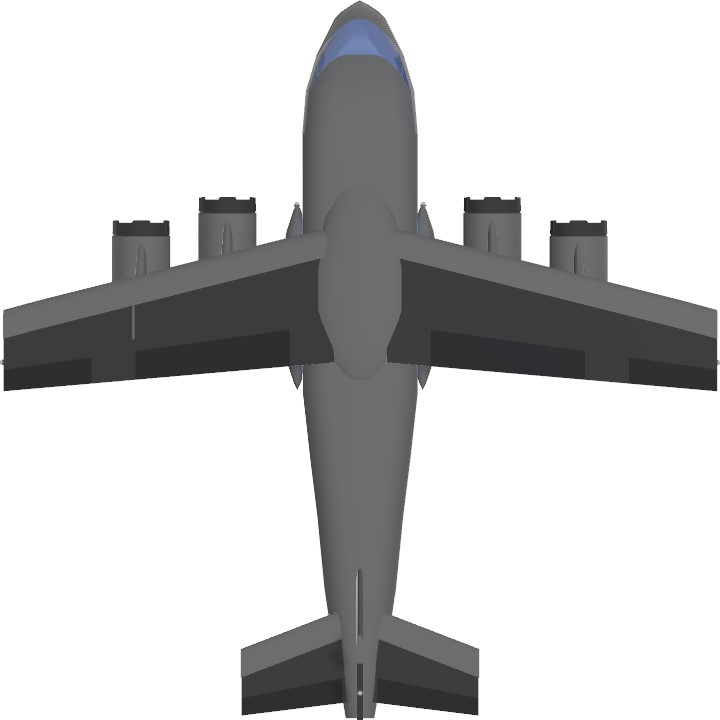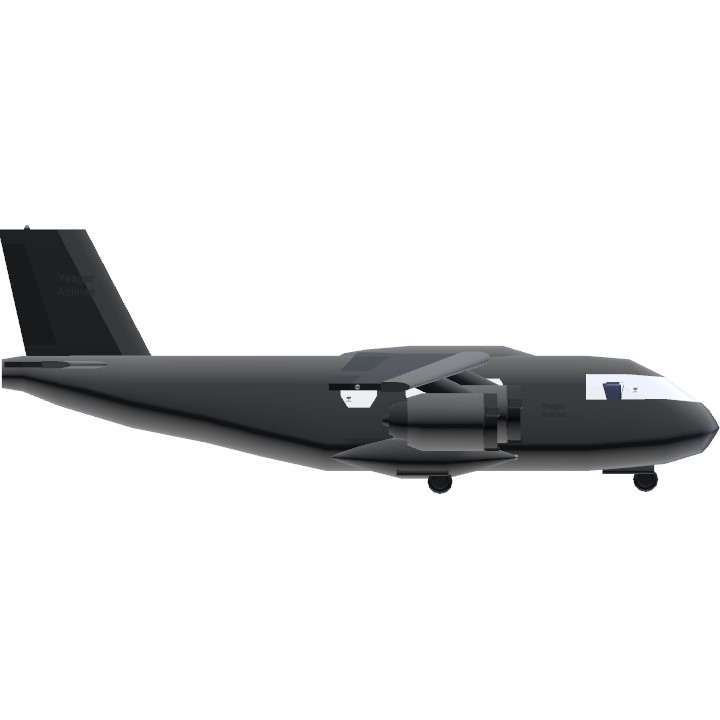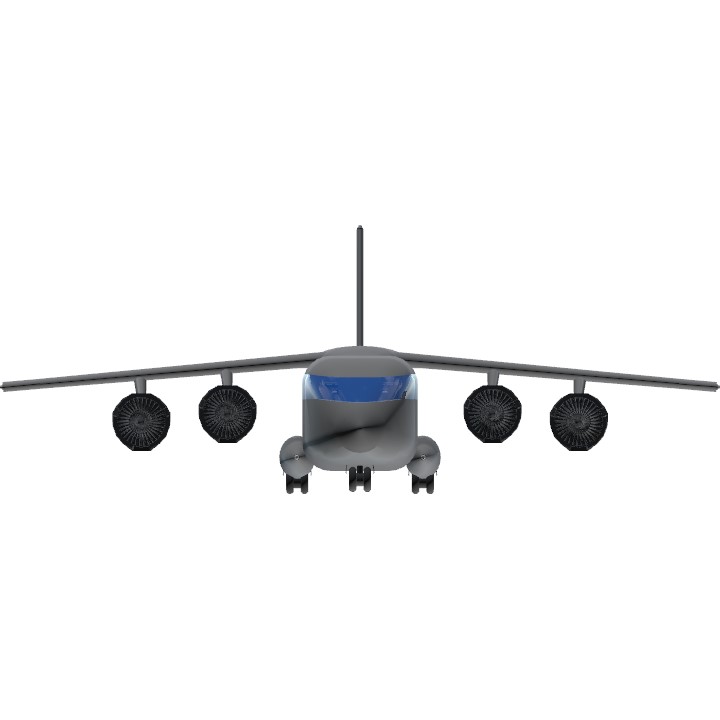OVERVIEW
The GARj-121 is a regional jet designed for small regional routes. This aircraft is specially made for Yeager Airlines, using the Stantard Blue and White Livery.
The plane is pretty small and really modern, having a full glass cockpit. It uses 4 small turbojets, with a similar design to the BAe-146. The parasol-mounted wings have a visible dihedral, giving the plane better handling while increasing the lift. There are 2 lateral entrances, one cargo door in the back (the bay can carry luggages) and the pilot’s cockpit is separated from the passenger’s by a door.
The lighting set gives light to the passengers and some strobe lights. It also has landing lights on the landing gears bays.
HISTORY
Yeager Airlines used to be the fastest way to connect Yeager, Wright, Maywar and Snow island at a low cost. The most widely used plane was a twin turboprop plane that was relatively low performance and poor in speed. The requirement for a regional jet started in 2003, when more passengers needed faster connections between Yeager and Wright. Three planes were selected: the BAe-146, the Phenom 300 and the GARj-121. Obviously, the AvroRJ had more passengers, but consumed more. The lots of seat of the BAe-146 weren’t needed, as the medium amount of passengers was 54 passengers/hour. This meant that it would have needed 1 and an half hours to make the BAe full and not waste fuel. So, the BAe was not anymore a choice.
They went on to try the Phenom 300, but it was quickly rejected due to the low capacity of passengers and cargo. The last choice was the GARj, that seemed the perfect one: 12 passengers, a cargo bay, and a good speed. Also, the 4 engines increased redundancy, making the plane safer, as it mostly flew oversea, making emergency landings less common as it could fly from Yeager to Wright with only two engine (2004 evaluation and safety test, Matt Borgel and Friedrich Smith).
PERFORMANCE
Performance-wise the aircraft is a fast one, capable of reaching subsonic speeds with a fairly good acceleration. It can carry 12 passengers, 2 pilots, 2000kg of luggage in the bay and 100 on each compartment over the passengers’ seats.
The cockpit gets glass displays, a map and a joystick instead of the regular cloche.
AGs
AG1: Open passenger doors and cargo door
AG2-3-4-5: Engines startup
AG6: Internal and external lighting
AG8: Close cockpit door
Specifications
General Characteristics
- Created On Windows
- Wingspan 40.9ft (12.5m)
- Length 40.9ft (12.5m)
- Height 15.3ft (4.7m)
- Empty Weight 22,119lbs (10,033kg)
- Loaded Weight 34,961lbs (15,858kg)
Performance
- Power/Weight Ratio 1.041
- Wing Loading 112.9lbs/ft2 (551.0kg/m2)
- Wing Area 309.8ft2 (28.8m2)
- Drag Points 7421
Parts
- Number of Parts 250
- Control Surfaces 7
- Performance Cost 1,504


